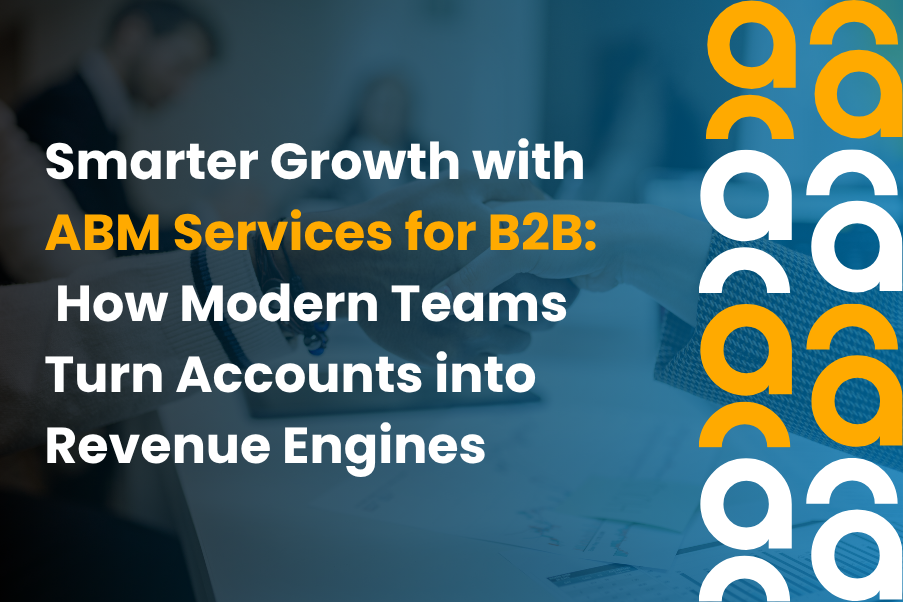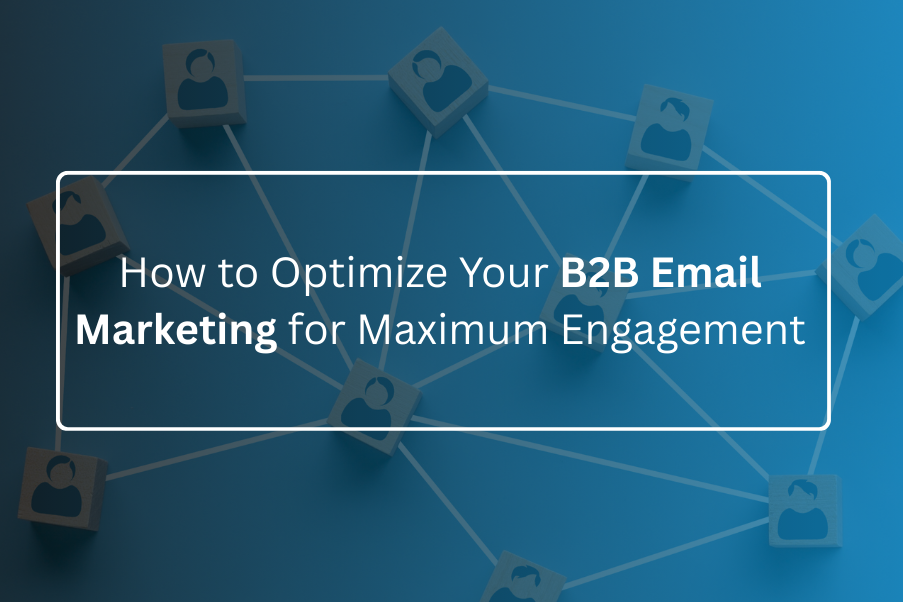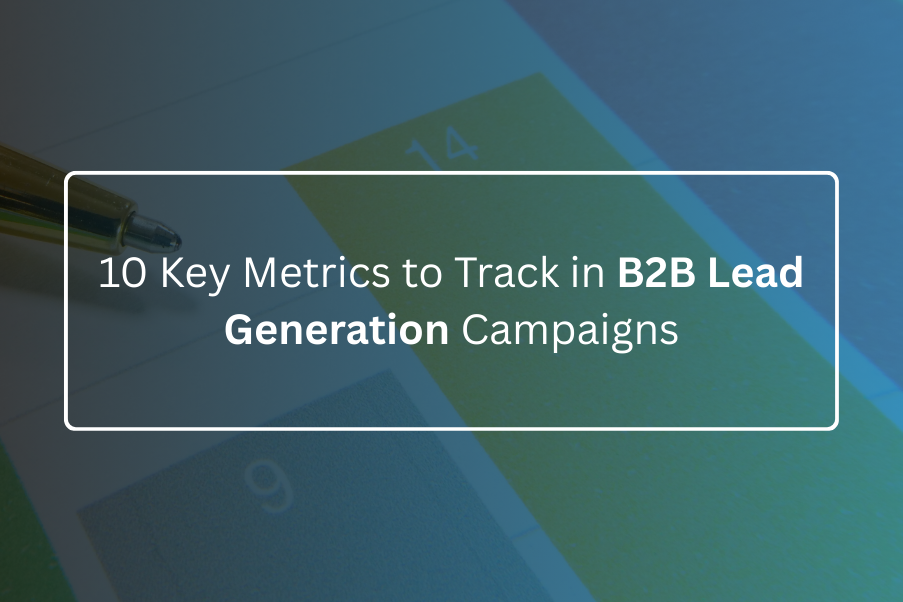Why Content Syndication Companies Are the Hidden Growth Engine for Media Agencies

Introduction
Are you juggling tight budgets, rising acquisition costs, and clients who expect predictable pipeline growth next quarter? Many media agencies face the same pressure: do more with less while keeping lead quality high. That pain pushes teams to test channels, tweak messaging, and chase short-term volume. A smarter move is to partner with content syndication companies that deliver reach and qualified prospects without pulling your team into constant execution.
This blog explains what those partners do, why they matter for agencies, how campaigns run, real-world use cases from Almoh Media, the metrics to track, and how to pick the right syndication partner. Read on and you’ll have a clear, actionable playbook to add a predictable pipeline to your clients’ calendars.
What exactly are content syndication companies?
Content syndication companies distribute your gated assets – whitepapers, reports, webinars, case studies across networks and publisher platforms that reach your target buyers. They do more than repost content. A quality partner maps your ideal customer profile, runs the distribution, captures leads, validates contact data, and reports on performance so your agency can focus on strategy and creative.
If you’re wondering how does b2b content syndication works, the short answer is: you provide high-value content and audience rules, the syndicator places the asset on vetted channels, prospects download or register, and you receive qualified contacts to nurture. Over time, the program tightens targeting and improves lead fit.
Why media agencies should use content syndication companies
1. Scale reach without rebuilding channels
Your owned channels have limits. Content syndication companies plug your content directly into trusted third-party audiences, expanding reach quickly and cost-effectively. This extends campaign life beyond paid ads and organic reach.
79% of marketers report using at least one content syndication vendor to scale reach.
2. Prioritise lead quality with surgical targeting
A strong syndication partner allows granular firmographic and role filters so you receive prospects that match your clients’ ICP. That means fewer low-intent leads and more conversations that matter.
Almost a third of B2B firms consider content syndication one of their most effective lead generation tactics.
When an agency runs a campaign through a b2b content syndication service, the results usually show stronger lead alignment and higher downstream conversion.
3. Deliver measurable pipeline, not just downloads
Syndicated campaigns are trackable end-to-end. You see who engaged, when, and which asset drove action. That makes it straightforward to attribute pipeline and refine future pushes.
Average B2B website conversion benchmarks sit near 2.23%, which helps set realistic expectations for downstream conversion and pipeline modelling.
4. Let your agency focus on higher-value work
When distribution, initial lead capture, and validation are handled by specialists, your team can concentrate on messaging, creative, nurture flows, and closing strategies. That division of labour improves client outcomes and internal focus. Partnering with content syndication companies frees agencies to stay strategic.
How content syndication companies typically operate
A standard campaign workflow looks like this:
- Define the target audience and ICP.
- Choose a gated asset that offers real value.
- Syndicator places the asset across publisher networks and targeted channels.
- Prospects register and leads are captured into your landing pages or the syndicator’s lead system.
- Data is validated, cleaned, and delivered to your CRM.
- Your nurture or sales cadence begins while performance is tracked and optimised.
This process answers the core question many agencies have about and offers a repeatable framework to scale lead flow predictably. Using content syndication companies makes this workflow faster and more reliable.
Real-World examples and use cases - Almoh Media
Almoh Media packages content syndication as part of its B2B lead generation offering and power suite. On the B2B lead generation page, Almoh Media describes content syndication as a way to amplify content reach while generating high-quality B2B leads.
Here are three agency-ready use cases drawn directly from Almoh Media’s services and capabilities.
1. Rapid pipeline starter for niche targets
Almoh Media’s b2b content syndication service places gated assets into curated channels while applying strict ICP filters. Agencies can use this to jump-start pipeline conversations in verticals where client brand awareness is low. See the Content Syndication service page for details.
2. Outsource underperforming campaigns to regain momentum
When a client’s lead flow stalls, Almoh Media’s B2B Leads Power Suite offers an outsourced path to revive campaigns. The Power Suite is designed to take over campaign delivery and target top-tier partner networks to restore consistent lead delivery. Agencies can hand over execution while keeping strategic control.
3. Global reach with compliance-first data
Almoh Media highlights global data reach and data privacy capabilities on its homepage, with guarantees like quick lead delivery windows and verified contacts. Agencies working across APAC, EMEA, or NA can scale campaigns while maintaining GDPR and CCPA compliance. Visit the Almoh Media homepage to review these capabilities.
These are practical b2b content syndication examples of how Almoh Media delivers measurable pipeline and supports agencies under pressure to show results.
Key metrics agencies must track (and demand from partners)
To treat syndication as a growth engine, track these KPIs:
- Lead volume and ICP-aligned qualified leads.
- Conversion rate from lead to opportunity, using a realistic B2B baseline.
- Cost per lead so you can compare to paid and organic channels.
- Engagement depth: time on asset, downloads, and return visits.
- Pipeline contribution and closed revenue attributed to syndication-sourced leads.
If you combine these metrics into a simple dashboard, you’ll quickly see which assets and networks produce the best returns. Use those insights to refine b2b content syndication strategies and focus spending on winners.
Best practices for media agencies using syndicators
- Start with a pilot and clear success criteria. Test one client or asset, measure lead quality and conversion, then scale.
- Tighten ICP filters to reduce noise and raise the lead fit.
- Use high-value gated assets such as whitepapers and case studies rather than generic blogs. These assets generate stronger b2b content syndication leads.
- Require lead verification and deduplication before leads enter CRM.
- Build a multi-touch nurture flow so sales contacts are effective and timely.
- Mix syndication with owned channels; don’t rely on a single source of leads. This balanced approach is a smart way to implement b2b content syndication strategies.
By following these best practices, agencies turn their b2b content syndication service partnerships into long-term growth levers.
Conclusion
When agencies treat content syndication companies as a core channel, they gain a reliable pipeline builder that complements paid, organic, and events-based efforts. Syndication provides targeted scale, measurable outcomes, and the operational lift to keep your agency strategic.
If you want hands-on support, Almoh Media runs content syndication programs as part of its B2B lead generation and B2B Leads Power Suite offerings. We help agencies and in-house teams launch pilots, validate lead quality, and scale campaigns with compliance-first data and fast lead delivery.
Contact us today, and we will design a pilot brief, set targeting, and deliver measurable results so your agency can keep its focus on strategy and creative.
Introduction
If you’re using content syndication, chances are you see it as just another way to get your content in front of more eyes. That’s fine, but there’s a lot more hidden beneath the surface. When you allow its full potential, content syndication ROI can surprise you, and it doesn’t take much to shift perception.
Let’s look at fresh data, outline a winning content syndication strategy, and show how U.S. B2B teams can get real value from it. Let’s begin!
What Is Content Syndication?
At its simplest, content syndication means sharing your B2B content: whitepapers, case studies, blogs on someone else’s site or network. This can be paid or free. You expand your reach, tap into new networks, and generate visibility, often reaching audiences you’d otherwise miss.
Why ROI From Content Syndication Deserves a Second Look
1. Huge lead production for relatively low spend
According to recent studies, the average cost per lead with content syndication is around $43. That’s far lower than other tactics, so even moderate conversion rates can offer solid returns.
2. Fast pipeline growth
Some platforms report that customers see 300–500% return on investment within three years. That’s not fluff – it’s real pipeline growth.
3. Verified conversion tracking methods
With UTM tagging and targeted vendor reports, U.S. marketers can track everything from initial syndication click to closed deal.
4. Built-in trust and positioning
Syndicating through known sites can give you indirect credibility, boosting brand awareness and authority without extra effort.
B2B Content Syndication Strategy: How to Do It Right
A good content syndication strategy starts long before content hits a third-party platform:
a). Pick assets that matter
Whitepapers, case studies, and long-form guides work best. They not only attract interest but also help establish your brand as industry-relevant.
b). Target lead quality, not rush volume
Instead of chasing clicks, target professionals. For example, top B2B firms average a 5.31% conversion rate on syndication offers.
c). Tag everything with UTM links
Measure traffic, engagement, bounce rates, and conversions back at your URL. This helps with syndication attribution.
d). Track core metrics
- CPL (cost per lead)
- MQL-to-SQL conversion rates
- Revenue per lead (use your average contract value)
e). Use the ROI formula
ROI= Revenue−Spend
Spend
For example, $1,000 spent → 50 high-quality leads → $5,000 average value = ($250k – $1k)/$1k = 249× ROI.
f). Optimize, rinse, repeat
Check what works by audience, site, and format. Then double down and drop what doesn’t.
Concrete U.S. ROI Stats You Can’t Ignore
| Metric | Statistics/Insight |
| Cost per lead | $43 average CPL |
| Syndication conversion rate | ~5.31% typical |
| Lead-to-deal conversion lift | 45% increase when focus is on quality |
| ROI over 3 years | 300%–500% reported |
| Projected industry growth | From $4.7 B in 2022 to $5.9 B by 2030 |
Content Syndication for Lead Gen: A Step‑by‑Step Plan
1. Define your ideal audience
Use buyer personas: titles, sectors, company size – so your content finds the right hands. This way, a sharper audience focus helps eliminate wasted spend and improves downstream lead quality.
2. Pick content with substance
Original research, how-to guides, competitive whitepapers – these both educate and convert. Plus, assets that solve specific problems tend to drive stronger engagement and more intent-driven leads.
3. Choose partners wisely
Use third-party platforms to reach U.S. B2B audiences. Look for those offering clear lead reporting and media kits. Before moving forward, ask for case studies or past performance metrics to make a more informed decision.
4. Structure campaigns with UTM tags
Make distinct tracking links for each partner and asset. This makes sure it’s easier to attribute leads, identify top performers, and compare ROI across channels.
5. Launch and monitor
Track CPL, CPL-to-SQL, cost per opportunity, pipeline driven, and revenue tied. At the same time, monitor activity in real-time to catch early trends and shift strategy fast if needed.
6. Review and refine monthly
Use metrics to shift spend toward top performers and tweak underperformers. As a result, consistent optimization keeps your syndication efforts aligned with revenue goals, not just vanity metrics.
How to Calculate Content Syndication ROI
- Calculate total spend (vendor fees + internal costs).
- Count total leads.
- Multiply leads by average deal size for potential revenue.
- Apply the ROI formula:
Revenue−Spend
Spend - Compare ROI over time to benchmark your initiatives.
This method is backed by multiple calculators and case studies.
Hidden Content Syndication Benefits
- SEO gains: Backlinks from quality sources can raise domain authority.
- Brand authority: Recognition on respected sites = credibility.
- Extended content life: A blog post can live on for months if syndicated well.
- Nurture acceleration: Leads from syndication are often further along in buying cycles.
Mistakes to Avoid and Fix Fast
Mistake: Only tracking clicks, not deals.
Fix: Tie every lead back to conversions with CRM integration. That way, you get a clearer picture of what’s actually driving revenue, not just traffic.
Mistake: Focusing only on cheap volume.
Fix: Go after quality; MQL-to-SQL rates matter most. Otherwise, your sales team will waste time on leads that won’t convert.
Mistake: Publishing irrelevant content.
Fix: Audit content – ensure tone, relevancy, and depth match syndication partner audiences. In doing so, you increase the chances of your content resonating with the right decision-makers.
Mistake: Not optimizing over time.
Fix: Regular performance review. Cut poor performers, boost winners. Over time, this helps improve ROI and keeps your content syndication strategy focused and results-driven.
Why Lead Quality Beats Volume
Not all leads are created equal. A smaller batch of high-intent leads can drive more revenue than a huge pool of low-interest ones.
Many B2B brands in the USA are shifting toward account- based syndication, where campaigns are matched to specific industries or companies. This helps improve conversion rates, shorten sales cycles, and increase customer lifetime value.
In short, prioritizing lead quality helps improve the long-term content syndication ROI, especially when targeting high-ticket accounts.
How AI Is Shaping the Future of Syndication
AI tools are starting to reshape content syndication strategy by analyzing behavior patterns and automating placements across high-performing channels.
With predictive scoring, marketers can now:
- Match content formats to individual user segments
- Forecast lead readiness using engagement scores
- Automate syndication at scale using content intent data
These innovations are raising the ceiling on what’s possible for B2B content syndication, especially for companies focused on measurable results.
About Almoh Media
Use metrics to shift spend toward top performers and tweak underperformers.
As a result, consistent optimization keeps your syndication efforts aligned with revenue goals, not just vanity metrics.
At Almoh Media, we specialize in high-impact content syndication for lead gen. We help B2B companies in the U.S. grow their pipelines by delivering:
- Verified lead generation from trusted channels
- Industry-specific targeting and campaign setup
- Transparent reporting tied to your sales funnel
- A proven strategy backed by real ROI
We understand the U.S. B2B buyer journey, and our syndication campaigns are built to generate demand, not just clicks.
Final Takeaway
Content syndication is an easy win if done smartly.
Focus on:
- Quality, not just volume
- Clear tracking and attribution
- Lead-to-deal conversions
- Continuous optimization
With $43 CPL, 5+ percent conversion, and long-term returns of 300–500%, most U.S. B2B teams can justify putting more budget behind it.
Ready to Get Real ROI from Content Syndication?
Let Almoh Media help you build a smarter lead-gen machine. We bring strategy, scale, and precision to content syndication – so your campaigns don’t just get seen; they convert. Reach out now to get started.
-
 Why Content Syndication Companies Are the Hidden Growth Engine for Media Agencies
Why Content Syndication Companies Are the Hidden Growth Engine for Media Agencies -
 How the Right B2B Content Syndication Service Provider Elevates Your ABM Campaigns
How the Right B2B Content Syndication Service Provider Elevates Your ABM Campaigns -
 Smarter Growth with ABM Services for B2B: How Modern Teams Turn Accounts into Revenue Engines
Smarter Growth with ABM Services for B2B: How Modern Teams Turn Accounts into Revenue Engines -
 How to Optimize Your B2B Email Marketing for Maximum Engagement
How to Optimize Your B2B Email Marketing for Maximum Engagement -
 10 Key Metrics to Track in B2B Lead Generation Campaigns
10 Key Metrics to Track in B2B Lead Generation Campaigns

